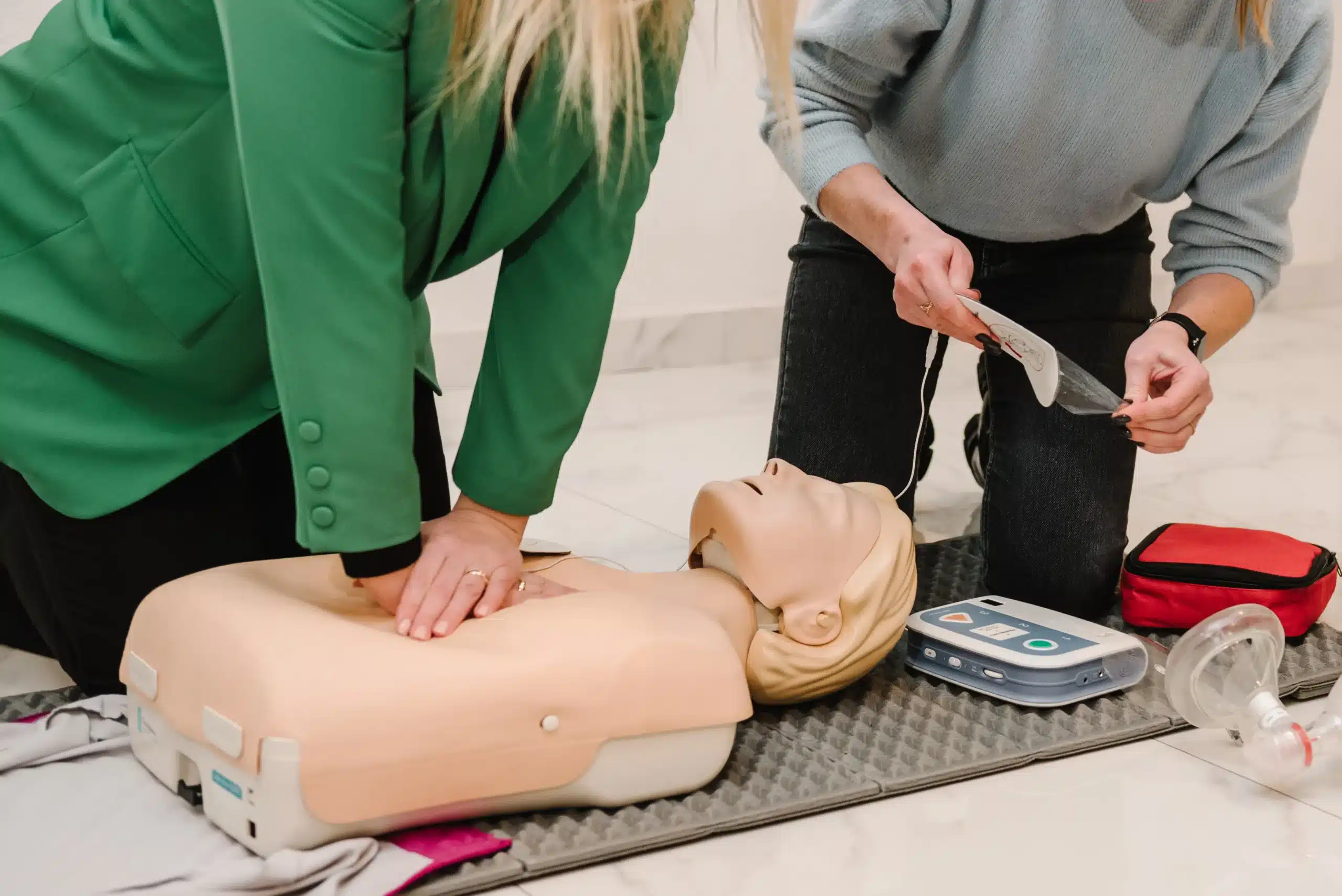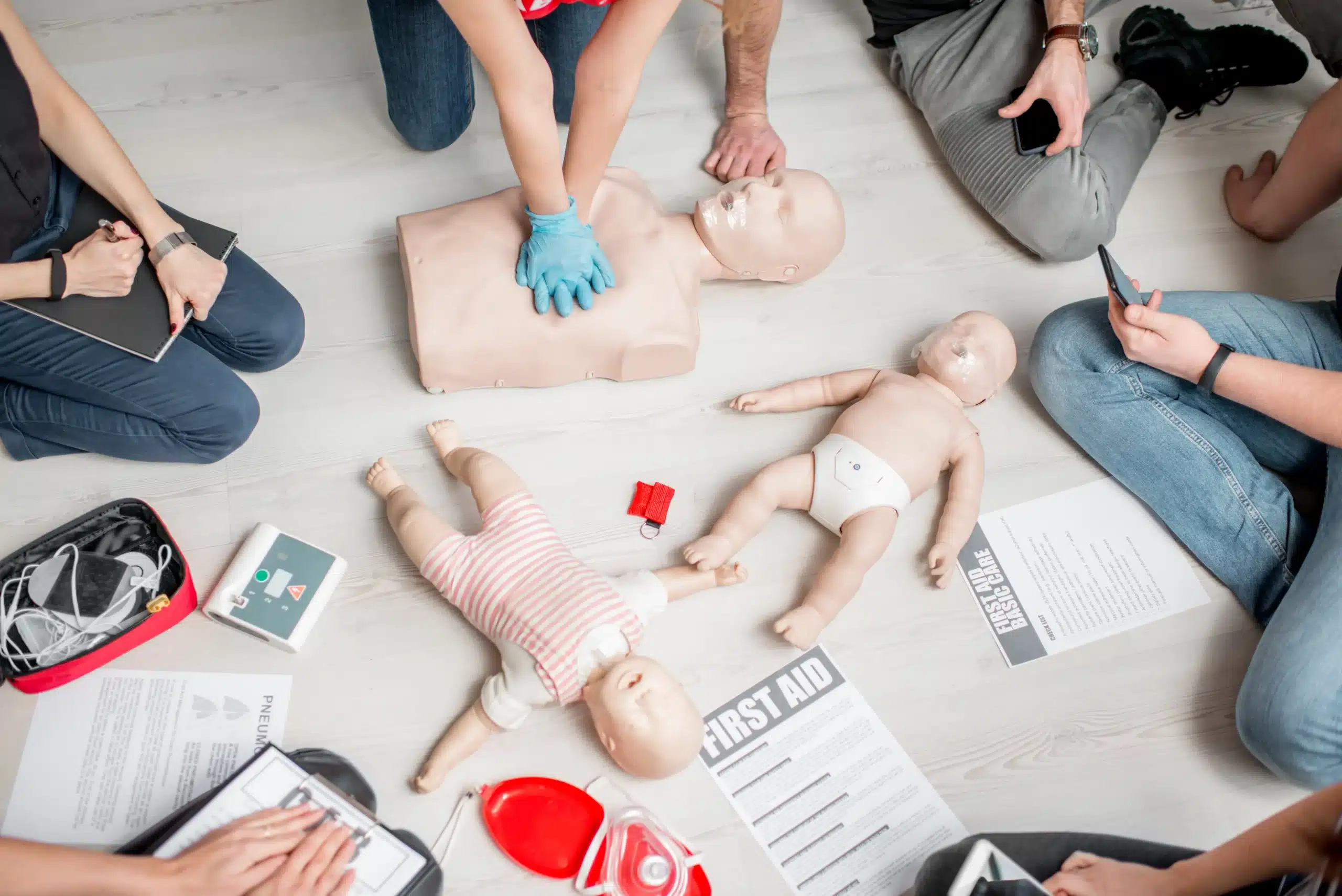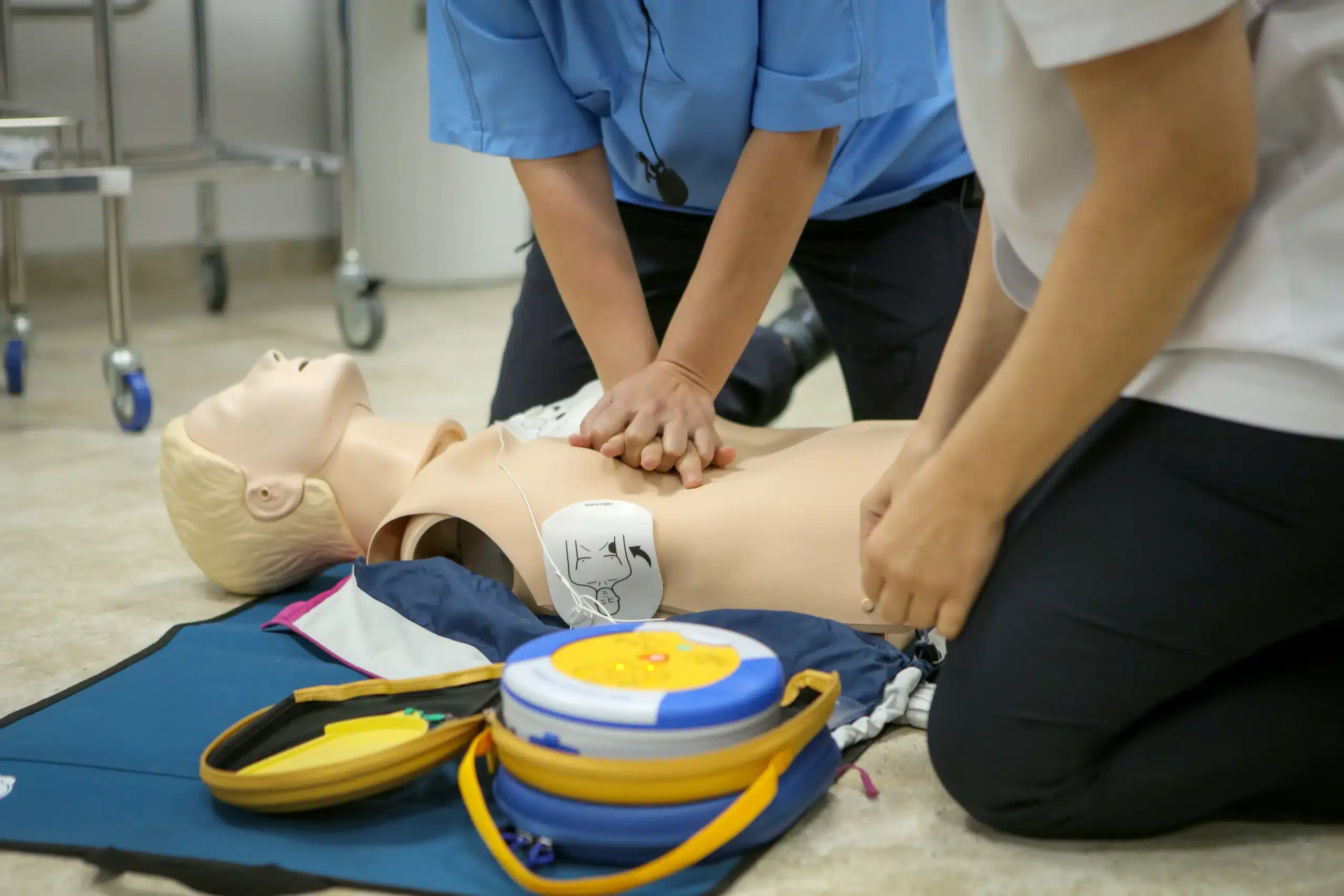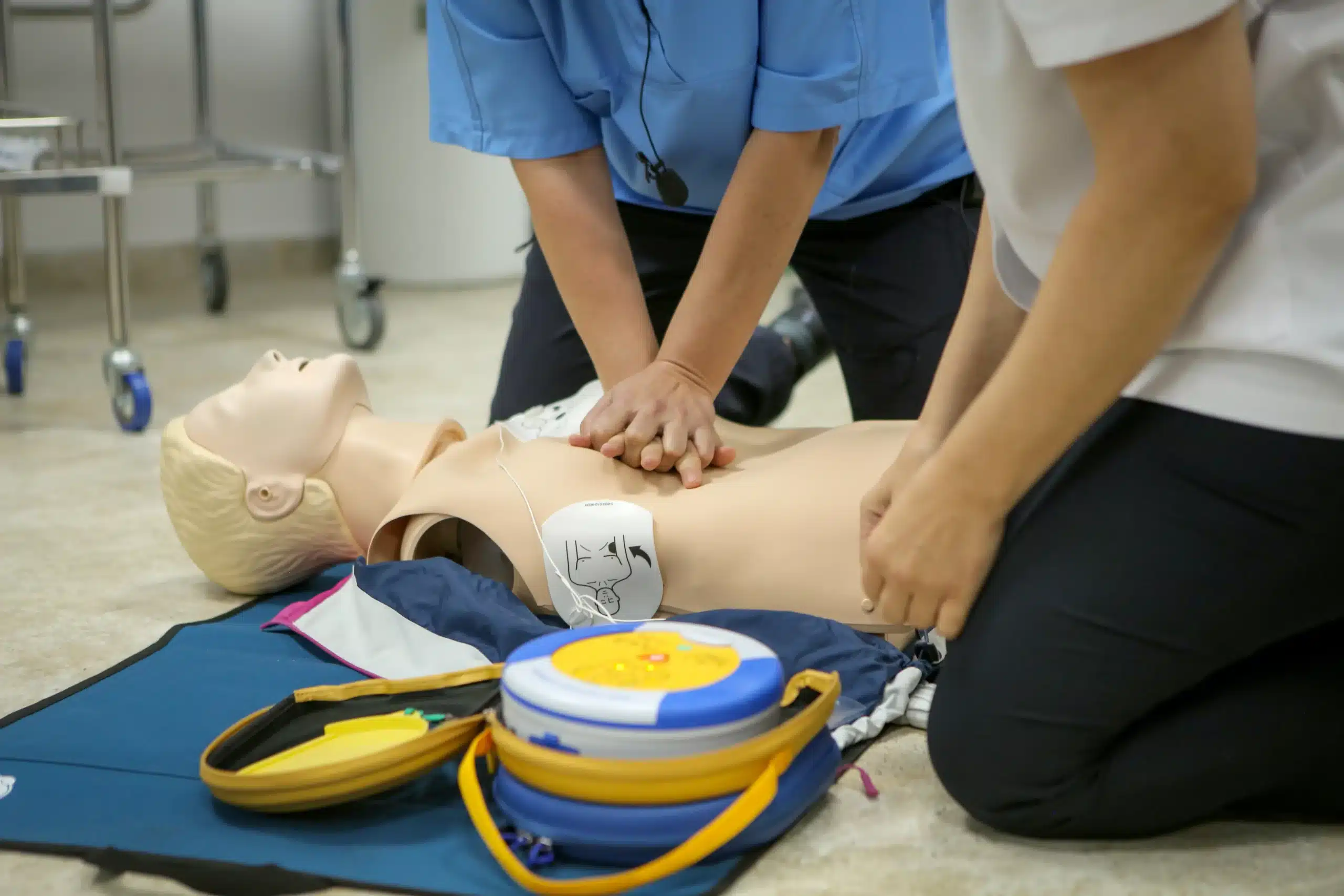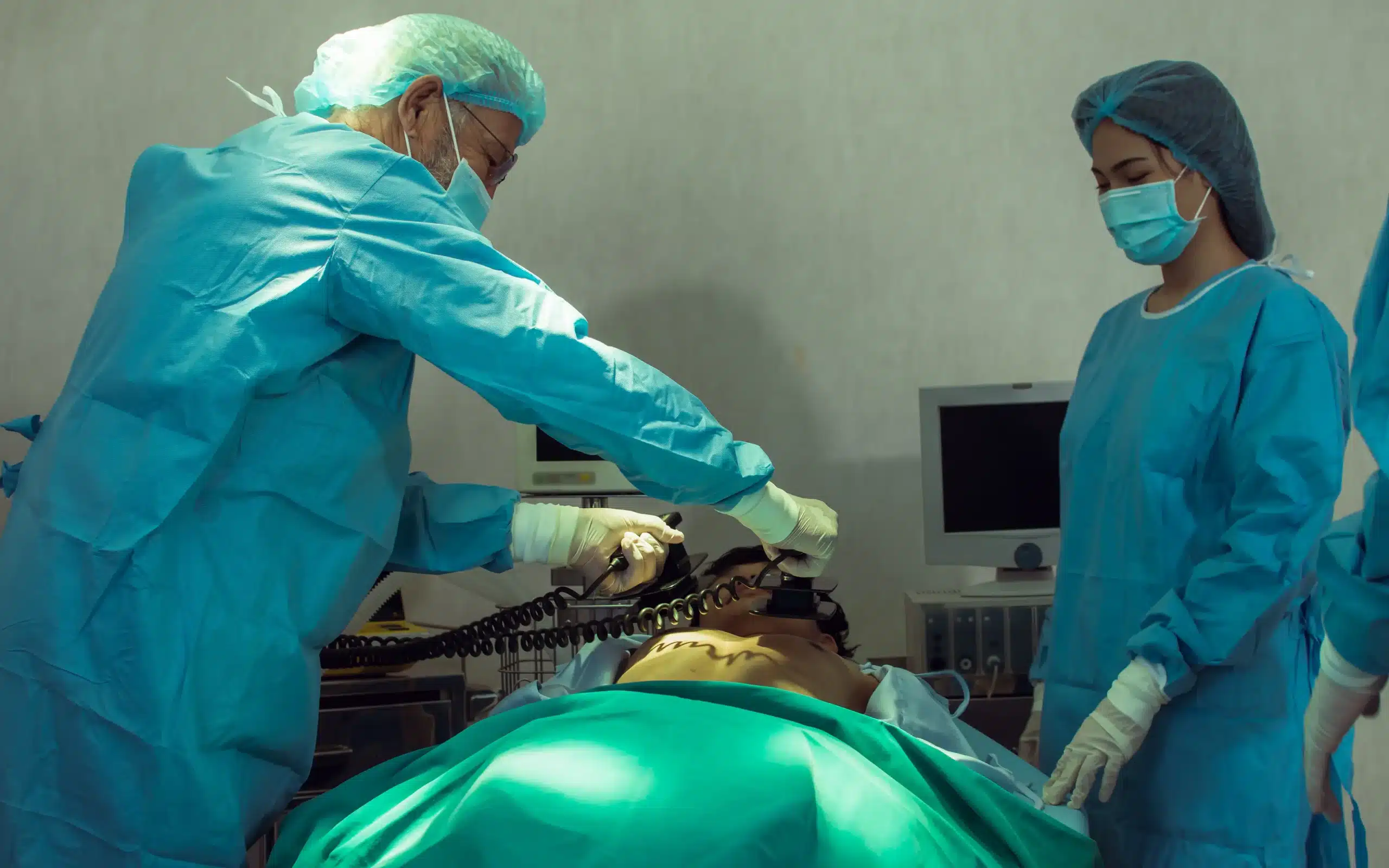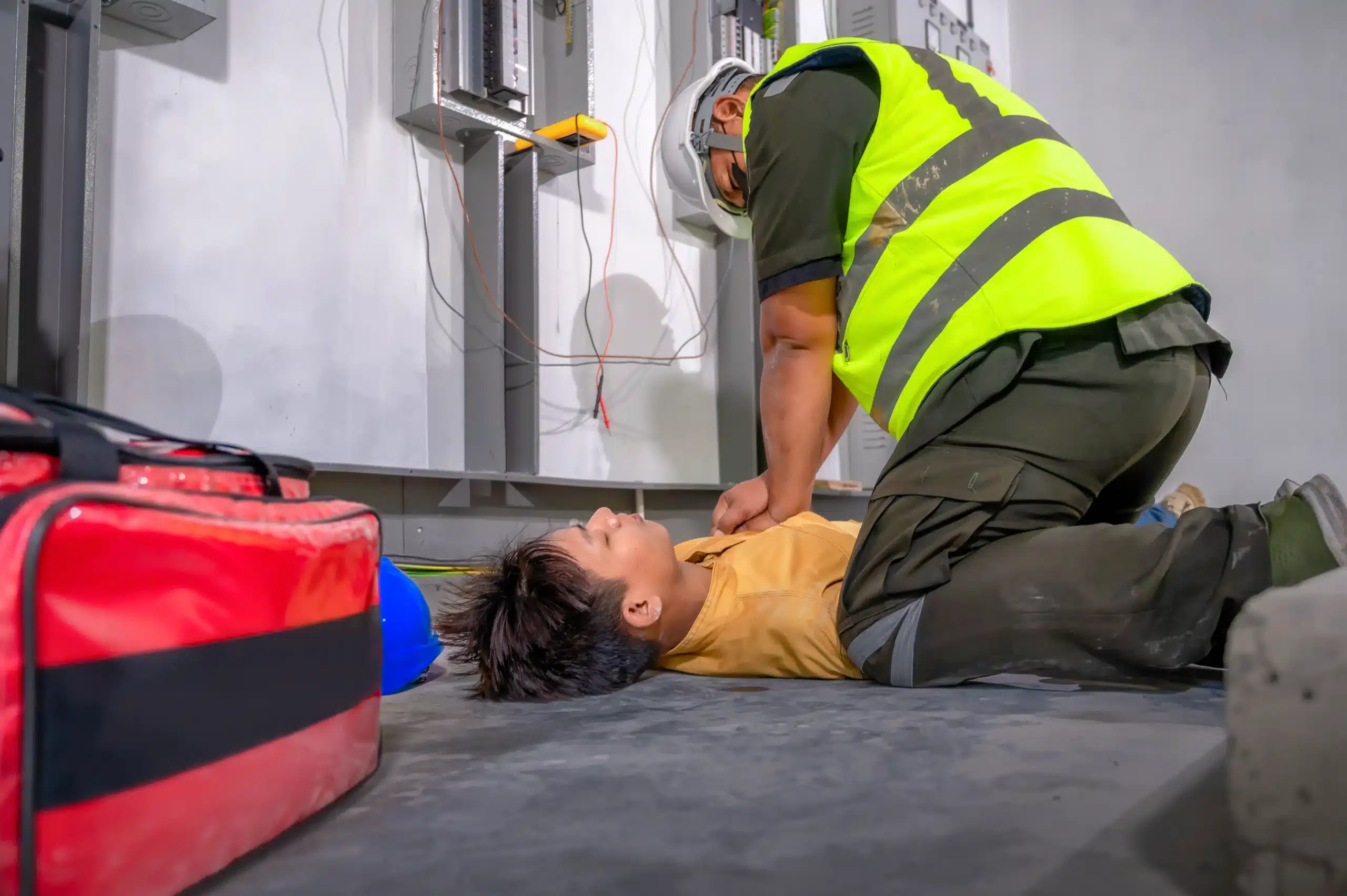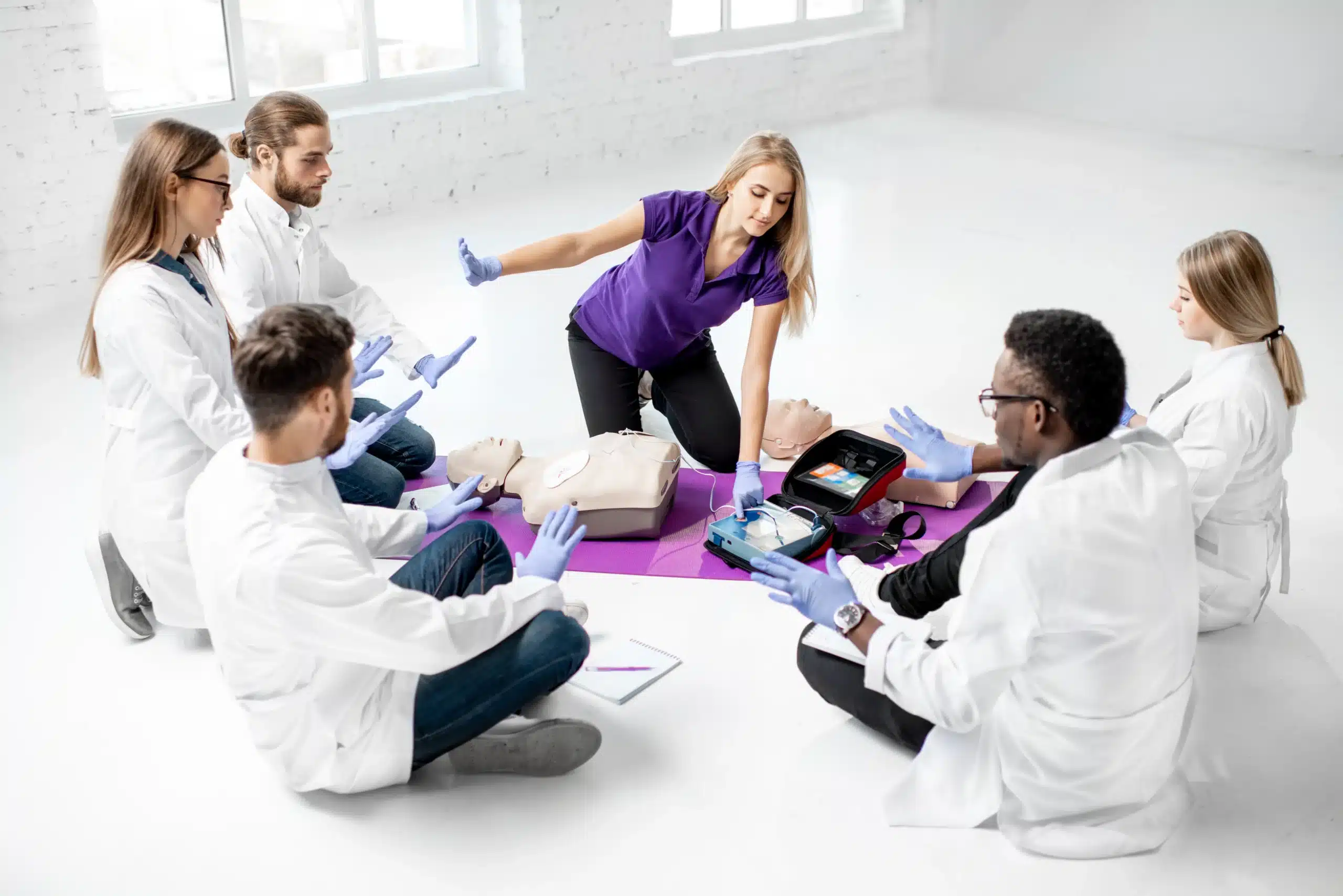Emergencies can happen anytime, anywhere. Are you prepared to respond? BLS certification gives you the skills and confidence to provide critical care in life-threatening situations. If you’re looking for “BLS classes near me,” this guide will help you find the right training program to meet your needs. We’ll cover everything from the core skills taught in BLS classes to the different certification options available. Whether you’re a healthcare professional or simply someone who wants to be prepared, BLS training is an invaluable investment in yourself and your community. Let’s explore how BLS certification can empower you to make a difference when it matters most.
Key Takeaways
- BLS certification provides advanced life-saving skills: It goes beyond basic CPR to equip you with the techniques needed to manage cardiac arrest, respiratory distress, and airway obstructions, essential skills for healthcare professionals and first responders.
- Choosing the right BLS course requires careful consideration: Evaluate factors such as the training provider’s reputation, instructor experience, course format (in-person, blended, or online), and whether the certification aligns with industry standards like AHA compliance.
- BLS certification offers long-term value: It can enhance your career prospects, boost your confidence in responding to emergencies, and empower you to provide critical care when it matters most, making it a worthwhile investment for both personal and professional growth.
What are BLS Classes & Why are They Important?
BLS stands for Basic Life Support. It’s a critical training program that teaches individuals how to respond to life-threatening emergencies. BLS certification goes beyond basic CPR, equipping healthcare providers and first responders with the skills to manage cardiac arrest, respiratory distress, and airway obstructions. These classes are essential for maintaining high standards of patient care and improving outcomes in emergency situations. The skills you learn in a BLS class can mean the difference between life and death.
BLS Training Skills
BLS training provides comprehensive instruction in a range of life-saving techniques. You’ll learn how to perform CPR for adults, children, and infants, including chest compressions and rescue breaths. The curriculum also covers the proper use of an automated external defibrillator (AED) and how to clear obstructed airways. BLS training emphasizes hands-on practice, critical thinking, and teamwork to prepare you for real-world emergencies. This combination of knowledge and practical skills ensures you can respond effectively under pressure.
Who Needs BLS Certification?
BLS certification is primarily for healthcare professionals, including doctors, nurses, paramedics, and other first responders. If you work in healthcare, BLS certification is likely required for your job. It signifies a higher level of competency in responding to medical emergencies. While CPR training is valuable for everyone, the American Red Cross recommends BLS certification for healthcare roles due to its comprehensive approach. Safety Training Seminars offers BLS certification courses designed to meet these professional standards.
Find the Right BLS Class Near You
Finding the right BLS class means understanding the different course types, choosing a reputable provider, and ensuring the course meets the necessary accreditation standards. Let’s break down each step to help you find the perfect fit.
BLS Class Types
BLS training courses accommodate various learning styles and schedules. You’ll typically find classes in these formats:
- In-Person Classes: These traditional classes offer hands-on instruction and direct interaction with a certified instructor, allowing for immediate feedback and personalized guidance. Safety Training Seminars offers in-person BLS classes in Santa Cruz, Monterey, and Capitola, CA.
- Blended Learning: This format combines online coursework with an in-person skills session. Blended learning offers flexibility if you prefer to learn at your own pace but still value hands-on practice. The American Red Cross offers more information on BLS training options.
Evaluate BLS Training Providers
Choosing a qualified BLS training provider is crucial for a valuable learning experience. Here’s what to consider:
- Instructor Expertise: Look for providers with certified instructors who have significant real-world experience. Experienced instructors offer practical insights and answer your specific questions effectively. A-B-CPR offers helpful tips for choosing the right BLS course.
- Reviews and Testimonials: Check online reviews and testimonials to understand past students’ experiences. Focus on comments about instructor quality, course organization, and overall satisfaction.
Accreditation & Certification Standards
Ensure your BLS certification meets the required standards and is recognized by your employer or governing body.
- AHA Compliance: Many employers require BLS certification aligned with the American Heart Association (AHA) guidelines. Verify that the training provider explicitly states their adherence to AHA standards. Safety Training Seminars is an AHA Training Center offering AHA-compliant BLS certification.
- Certification Validity: Confirm the certification’s validity period and any renewal requirements. Staying current with your certification ensures you’re always prepared to provide effective care.
What to Expect in a BLS Class
Knowing what to expect can help you feel prepared and confident on the day of your BLS class. Here’s a breakdown of the typical BLS course experience:
Course Structure & Duration
BLS training courses are designed to be comprehensive and efficient. You can find classes in several formats, including online, in-person, and blended learning options. This variety lets you choose the format that best suits your learning style and schedule. In-person classes provide immediate feedback and allow for real-time interaction with instructors and other students. Online courses offer flexibility for those with busy schedules or limited access to in-person training. Blended learning combines the benefits of both formats.
Hands-On Practice
BLS certification emphasizes practical skills. Expect a significant portion of your class to involve hands-on training. You’ll practice essential techniques like CPR and AED use on mannequins, building the muscle memory you’ll need to respond effectively in real-life emergencies. This focus on practical application ensures you’re not just learning the theory but also developing the confidence to act quickly and efficiently under pressure.
Assessment & Certification
Most BLS courses include both a written exam and a skills check. You’ll typically receive your certification card the same day if you successfully complete both components. This immediate feedback reinforces what you’ve learned and allows you to put your new BLS skills to use right away. BLS certifications are typically valid for two years. Check with your certifying organization for specific renewal requirements to maintain your credentials.
BLS Class Costs
Understanding the cost of BLS certification is an important part of choosing the right class. Let’s break down the typical price range and look at ways to find the best value.
Average Pricing
BLS classes typically cost around $75, and each class runs for about three hours. This price generally covers instruction, materials, and certification processing. While prices may vary slightly between different training providers, this range offers a helpful benchmark as you research options. Safety Training Seminars’ BLS certification course is competitively priced, offering excellent value.
Discounts & Value
Finding a high-quality, affordable BLS class is easier than you think. Many training centers offer discounts, especially for groups or returning students. Check if your employer offers reimbursement for professional development courses like BLS. Sometimes, bundling BLS certification with other courses like ACLS or PALS can also save you money. Safety Training Seminars offers a low price guarantee, so you can feel confident you’re getting the best possible training at a fair price. Contact us if you have questions about pricing or discounts.
Prepare for Your BLS Class
Getting ready for your BLS class doesn’t have to be stressful. A little preparation goes a long way in ensuring you have a smooth and productive learning experience. Here’s how to prepare:
Required Materials & Pre-Course Study
Before class, gather a few essential materials. The most important is the BLS Provider Manual from the American Heart Association, which covers the core concepts and techniques you’ll learn. Familiarize yourself with the content beforehand. Some instructors require a pre-course assessment, so check with your provider—Safety Training Seminars, for example—about their requirements. This often involves an online exam evaluating your baseline knowledge.
Your BLS course will likely involve hands-on practice with equipment like an AED trainer and manikins. While usually provided in class, confirm with your training center what they supply versus what you need to bring. Personal items like a pocket mask and disposable mouthpieces might also be required, so double-check the equipment list or contact your instructor if you’re unsure.
What to Wear & Bring
Comfort is key during your BLS class. You’ll be actively participating in demonstrations and practice scenarios, so wear comfortable clothing that allows free movement. Closed-toe shoes are essential for safety. Bring a pen and notebook to jot down important notes and key takeaways. These small details can significantly improve your learning experience.
Renew Your BLS Certification
Keeping your Basic Life Support (BLS) skills sharp is essential for any healthcare provider. It’s not a one-and-done deal; regular renewal ensures you’re always prepared to provide effective, high-quality care in emergencies. This section covers everything you need to know about the BLS renewal process and why staying up-to-date is so important.
Validity & Renewal Process
BLS certification is typically valid for two years. Think of it like a driver’s license—it needs to be renewed to stay current. As your certification nears its expiration date, you’ll need to enroll in a recertification course. These courses are often shorter than the initial certification class, focusing on a refresher of essential skills and knowledge. Many providers offer recertification courses within 30 days of your expiration date, giving you a little buffer to find a class that fits your schedule. Check with your certifying organization, such as the American Heart Association, for specific guidelines on renewal timelines.
Stay Current with BLS Guidelines
The medical field is constantly evolving, with new research and best practices emerging all the time. BLS guidelines are updated regularly to reflect these advancements, ensuring that healthcare providers use the most effective techniques in emergency situations. Renewal courses cover these updated guidelines, giving you the confidence of knowing you’re providing the best possible care. They also reinforce the importance of critical thinking, teamwork, and hands-on practice, all crucial elements of successful BLS. Staying current with BLS guidelines isn’t just about checking a box; it’s about maintaining a high standard of care and improving patient outcomes. For convenient BLS renewal courses in Santa Cruz, contact Safety Training Seminars today.
Choose the Best BLS Class for You
Finding the right BLS class means considering your learning style, schedule, and career goals. Let’s explore how to find the best fit.
Learning Style & Schedule
Think about how you learn most effectively. Do you prefer a traditional classroom or the flexibility of online learning? Many organizations, like the American Red Cross, offer various BLS training formats—online, in-person, and blended—to suit different learning styles.
Blended learning, combining online coursework with in-person skills practice, offers a great balance. This format lets you complete the cognitive portion at your own pace, then attend a shorter in-person session for hands-on training. Consider your schedule and how much time you can dedicate to each part.
Class Format & Your Goals
Your career aspirations also influence your choice of BLS class format. BLS certification is essential for healthcare professionals, from doctors and nurses to other providers. It covers core CPR skills and advanced techniques for managing cardiac arrest, respiratory distress, and airway obstructions, as detailed by the American Red Cross.
If you’re pursuing a healthcare career, ensure the class aligns with industry standards and provides comprehensive training. In-person classes offer immediate instructor feedback and the chance to practice in a controlled environment. If your schedule is demanding, a blended learning format can be a convenient way to earn your BLS certification while still gaining essential hands-on experience. Hands-on practice is key for developing the muscle memory needed for effective CPR and AED use.
Top BLS Training Providers in Santa Cruz
Finding the right BLS training provider is key to receiving quality instruction and a recognized certification. Here are some top BLS training providers in Santa Cruz:
Safety Training Seminars
Safety Training Seminars offers AHA-certified BLS training in Santa Cruz. They focus on high-quality instruction and convenient schedules for busy professionals. They also offer ACLS, PALS, and CPR courses. Learn more about their BLS courses and schedules on their website. Safety Training Seminars also has a low price guarantee. Contact them with any questions.
American Red Cross
The American Red Cross offers BLS training in Santa Cruz and nationwide. Their courses teach participants how to respond to cardiac emergencies. The Red Cross emphasizes hands-on training and a comprehensive curriculum. Visit their website to find a course and learn more.
American Heart Association
The American Heart Association (AHA) sets the standard for BLS training. Their courses are widely accepted in healthcare. The AHA certifies training centers like Safety Training Seminars to deliver their curriculum. This ensures consistent, high-quality instruction. Find more information about AHA training standards on their website. Many AHA-certified providers offer blended learning—online learning combined with in-person skills sessions.
Local Hospitals & Medical Centers
Many hospitals and medical centers in Santa Cruz offer BLS training. These include Dignity Health and Sutter Health. These courses are often designed for healthcare professionals. Check with local hospitals and medical centers for schedules and availability. They may also offer specialized training or continuing education.
Common BLS Training Misconceptions
It’s easy to get confused about BLS training, especially if you’re new to the field. Let’s clear up some common misconceptions.
BLS vs. CPR
One common misconception is that Basic Life Support (BLS) and Cardiopulmonary Resuscitation (CPR) are the same. While related, they’re not interchangeable. CPR focuses on chest compressions and rescue breaths for someone who has stopped breathing or has no pulse. Think of it as the foundation of life-saving techniques. BLS builds upon CPR. It’s a more comprehensive approach designed for healthcare providers like doctors, nurses, and EMTs. BLS includes everything in CPR and also covers advanced techniques for managing cardiac arrest, respiratory distress, and airway obstructions. It often includes training on using automated external defibrillators (AEDs) and working as part of a team during a medical emergency. Understanding this difference is key when choosing the right training for your needs. For a helpful explanation of the distinctions, check out the American Red Cross website.
Who Benefits from BLS Training
Another misconception is that only healthcare professionals need BLS training. While essential for medical personnel, BLS certification benefits a much wider range of people. Anyone who works with children, like childcare providers, teachers, and coaches, can benefit from these skills. Other professions where BLS training is valuable include lifeguards, security personnel, and even those in corporate settings where having trained responders can be a real asset. BLS training empowers individuals to respond effectively during emergencies, potentially saving lives. Lorraine Amalena discusses the broader community impact of BLS and AED training and its role in public safety. Having more people in a community trained in BLS can significantly improve outcomes during emergencies like out-of-hospital cardiac arrests, as highlighted in a scoping review published by the National Library of Medicine. Consider BLS training an investment in your confidence and ability to help in critical situations. It’s a valuable skill for anyone to have.
The Long-Term Value of BLS Certification
Getting your BLS certification is an investment that pays off in more ways than one. It’s not just about checking a box; it’s about gaining valuable skills and opening doors to new opportunities. Here’s how BLS
Career Advancement
BLS certification is often a prerequisite for many healthcare roles and a major advantage in other fields. Employers, especially in healthcare settings, actively seek out candidates with this certification. It signals that you’re trained to handle critical situations and committed to patient safety. Having a BLS certification on your resume can give you a competitive edge, whether you’re applying for a new job or aiming for a promotion. It can also open doors to specialized areas or leadership positions where advanced life support skills are essential. For example, many registered nurses obtain their BLS certification to enhance their career prospects.
Emergency Confidence
Beyond career advantages, BLS certification equips you with the confidence to act decisively during emergencies. Knowing you have the skills to provide immediate care can make all the difference in a life-or-death situation. This confidence extends beyond the workplace and empowers you to assist family, friends, and your community. Research shows that bystander CPR significantly increases the chances of survival, and having BLS training can make you a more effective and confident first responder. It’s not just about having the skills; it’s about having the confidence to use them when it matters most. This peace of mind is invaluable, knowing you can step up and make a difference when every second counts.
Related Articles
- BLS Classes in Capitola: Your Complete Guide – Santa Cruz CPR Classes
- BLS Certification in Santa Cruz: Your Complete Guide – Santa Cruz CPR Classes
- BLS Courses in Monterey: Your Certification Guide – Santa Cruz CPR Classes
- Basic Life Support (BLS) in Capitola: Find a Class Near You – Santa Cruz CPR Classes
- BLS HeartCode Certification in Capitola: Your Complete Guide – Santa Cruz CPR Classes
Frequently Asked Questions
What’s the main difference between BLS and CPR? CPR is a core component of BLS, focusing on chest compressions and rescue breaths. BLS builds upon CPR by adding advanced airway management and the use of an AED. It’s designed for healthcare providers and includes a broader range of skills for managing various medical emergencies.
If I’m not in healthcare, do I still need BLS certification? While BLS is crucial for healthcare professionals, it’s valuable for anyone working with children, in public safety roles, or simply wanting to be prepared for emergencies. It equips you with the skills and confidence to respond effectively in critical situations, potentially saving a life.
How long is a BLS certification valid, and how do I renew it? BLS certification is typically valid for two years. To renew, you’ll need to take a recertification course, which is often shorter than the initial certification and focuses on refreshing your skills and knowledge, including any updated guidelines.
What should I expect during a BLS class? Expect a combination of interactive learning, hands-on practice, and assessment. You’ll learn essential life-saving techniques, practice on mannequins and AED trainers, and complete a written exam and skills check. The course structure can vary, with options for in-person, online, or blended learning formats.
How much does a BLS class cost, and are there ways to save? BLS classes typically cost around $75. Look for discounts offered by training providers, such as group rates or discounts for returning students. Some employers also reimburse for professional development courses like BLS. Bundling BLS with other certifications like ACLS or PALS might also offer cost savings.
